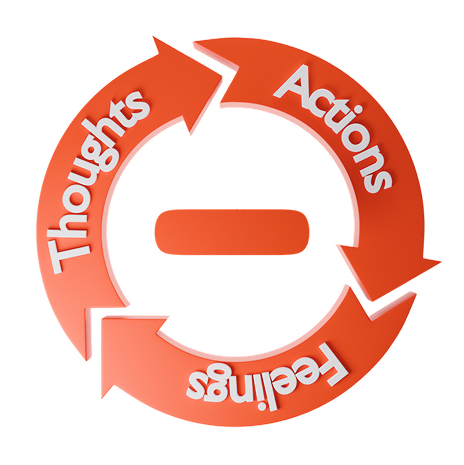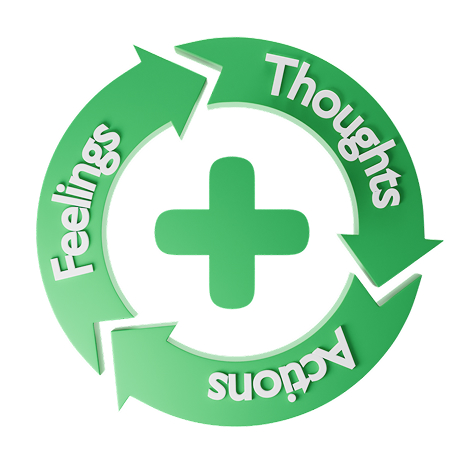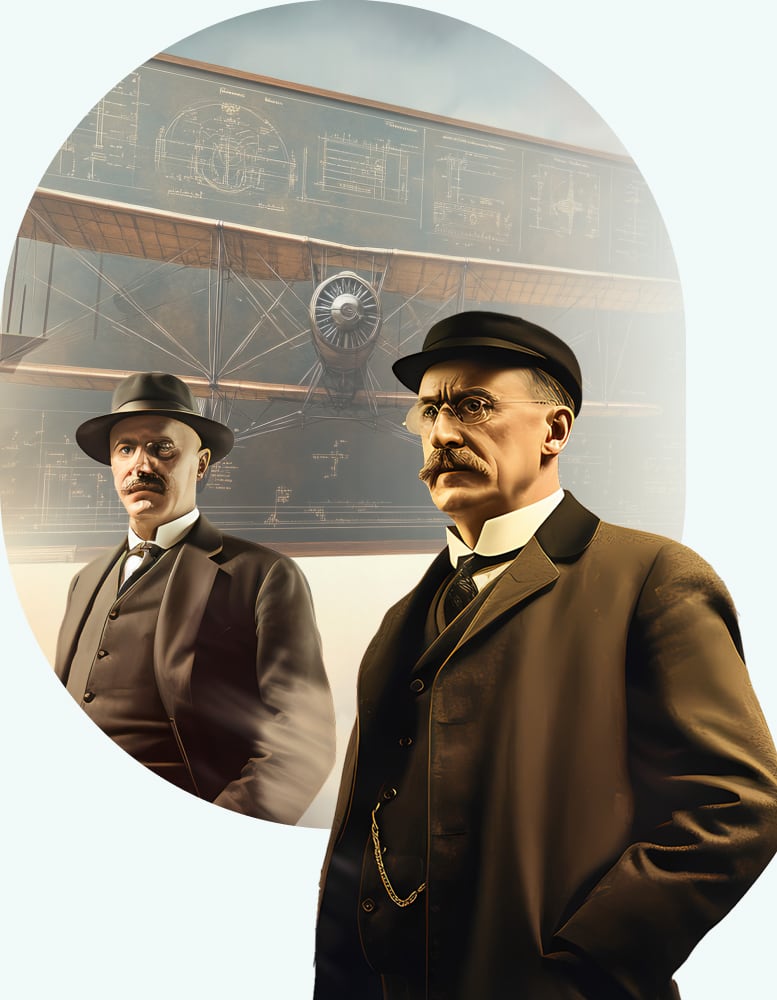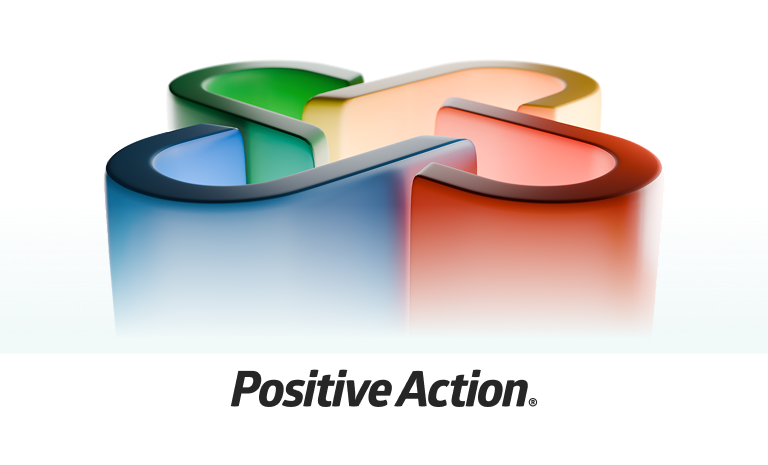
Positive Action is a structured PreK-12 educational program that fills a critical instructional gap, providing educators and practitioners with a proven approach and easy-to-use lessons.
Rooted in timeless principles, Positive Action bridges key pillars of education, prevention, mental health, and family support through a philosophy that knows no bounds.





This simple statement offers an elegant guide for making choices, both large and small. Every decision we make impacts our well-being in some way. By recognizing this connection, we sharpen our instinct to make positive choices. Like a muscle, this decision-making reflex strengthens with guidance and practice. Positive Action provides a framework and vocabulary to support this process.
Training a muscle requires discipline and more importantly, an understanding of how muscles are formed and maintained. Our actions are formed through a complex interplay of intuition, needs and desires. Youth often remain unaware of the intricacies of human psychology. Yet to really understand how we learn, we must distill these complexities into age-appropriate concepts that resonate and inspire growth.
Positive Action simplifies the human experience to an easy-to-understand cycle that youth can grasp and apply to their own lives. The Thoughts - Actions - Feelings Circle (TAF) is a visual representation that effectively captures the essence of human psychology.
The Circle illustrates how our thoughts influence our actions, and how the outcomes of our actions shape our feelings. The cycle continues as those feelings, in turn, affect our thoughts. This continuous process connects to every experience we encounter, providing a practical and relatable framework for understanding behavior.

Like any feedback loop, there is always potential for the process to deteriorate. When we start to experience negative feelings, it logically follows that our thoughts and our actions may also turn negative creating a cascading failure. Enter the vicious cycle of negativity.
How do we reverse a cycle of negativity? We start with slowly introducing positive actions that were absent before.

For youth, these might include activities such as regular exercise, a healthier diet, or reduced screen time. With small but meaningful steps, both youth and adults can break free from a vicious cycle and transform it into a virtuous one. Identifying and embracing what motivates us to make these important decisions remains absent from modern curricula. Positive Action fills this critical gap by addressing motivation in a non-didactic way.
Psychologists have studied the measurable differences between intrinsic and extrinsic motivation for decades. Yet youth development programs are often overly didactic or rely on incentivization schemes, with both strategies sometimes producing effects but ultimately not sustained. We know empirically now that when intrinsic motivation is present, the behaviors are far more enduring.
How do you nurture intrinsic motivation in youth? This is the very question that was used as the basis for development of Positive Action. The philosophy, structure and lessons are designed to achieve internalization of the why? Why should I eat well? Why should I read more books? The answer is, of course, complex at first glance but upon reflection, it is also elegantly simple.


The Thoughts - Actions - Feelings Circle is a personal construct that describes our inner thought processes. Its conditioning operates on an individual level, but humans live and grow within communities and society at large. For youth, understanding this complexity takes time, as their perceptions are still forming. For adults, reality is shaped by our upbringing, education, and experiences, which influence how we perceive and interact with the world.
To grasp how program components influence school and classroom practices, and ultimately impact school and classroom climate, we turn to the Positive Action Logic Model. This concept map illustrates the interplay between program components, moderating effects, and expected outcomes, providing a clear depiction of how Positive Action integrates into real-world environments.
 PreK-12 Instructional Curriculum
PreK-12 Instructional Curriculum Professional Development
Professional Development Integrated Bullying Lessons
Integrated Bullying Lessons Integrated Prevention Lessons
Integrated Prevention Lessons Correlated Multimedia Resources
Correlated Multimedia Resources Guided Differentiation
Guided Differentiation Parent & Family Resources
Parent & Family Resources Climate Resources
Climate Resources Counseling Resources
Counseling Resources Community Resources
Community Resources

Increased amount and quality of emotional and social development intervention strategies and materials used by teachers, administrators, other school staff and caregivers/families.




Increased collaboration and communication among students, staff, and families, resulting in a more supportive and cohesive school climate.
 Academic Orientation
Academic Orientation Coordinated Teamwork
Coordinated Teamwork Communal Area Behavior
Communal Area Behavior Parent/Guardian Involvement and Satisfaction
Parent/Guardian Involvement and Satisfaction Admin relationship among teachers, students, and parents
Admin relationship among teachers, students, and parents
 Fewer Behavioral / Disciplinary Problems
Fewer Behavioral / Disciplinary Problems Reduced Substance Use
Reduced Substance Use Decreased Violence and Emotional Problems
Decreased Violence and Emotional Problems Improved Health Behavior
Improved Health Behavior School attendance
School attendance Grades and Test scores in:
Grades and Test scores in:The logic model displays how Positive Action presents a continuum of effects from immediate effects of improved student competency levels to broader impacts of school and classroom climate. It accurately portrays the streams of influence and how moderating influences, such as implementation fidelity, sit at the nexus. The Theory of Triadic Influence presents a more detailed analysis of the commonly accepted Theory of Change for Positive Action.
Positive Action follows a logical scaffolding that can be adapted based on the needs of the diverse populations. With a consistent six-unit design underpinning the entire PreK-12 curriculum, the unifying structure ensures thematic alignment across all grade levels, reinforcing key concepts as students progress.

Many youth development programs take simplistic approaches to complex topics, often driven by the need to align with known standards or frameworks for commercialization. For example, one well-known social and emotional learning (SEL) framework separates relationship skills and social awareness into distinct competencies. Program developers seeking alignment often create lessons for each competency in isolation, effectively checking the box for compliance.
But did the student truly learn anything? Without showing the connection between these skills, providing context for why they must work together, or exploring what they mean on a personal level, these programs miss the most important learning opportunity: helping students see how relationships rely on social awareness, which in turn depends on self-honesty and self-management.
The over-reliance on frameworks often results in rigid curriculum design. In contrast, Positive Action was never bound by such constraints as the frameworks and standards did not exist at the time. Developed by an educator who identified critical gaps in instruction, Positive Action emerged from years of research and development informed by sound pedagogical theory.
Grounded in self-discovery and driven by what truly works, it resonates deeply with youth. By going beyond alignment and focusing on interconnected skills, Positive Action empowers students to find meaning and context in their learning, ensuring these lessons stay with them for life.
That's the elegance of the Thoughts-Actions-Feelings Circle—a visual representation that bridges the rigidity of standards-informed curriculum development by connecting these critical concepts.

Youth today are expressing a growing need to find meaning in their lives—to answer their "why". Without it, they often struggle, in school, in relationships, and in defining their sense of self. As their journey of self-discovery becomes increasingly complex, we must all play a part in offering guidance and support.
Positive Action offers a powerful response, an evidence-based, timeless methodology that equips youth with the tools to thrive. The world around them will continue to evolve, but our message remains constant:
Learning brings discovery, and with that, meaning.
Schedule a Webinar or Connect With Us Today
